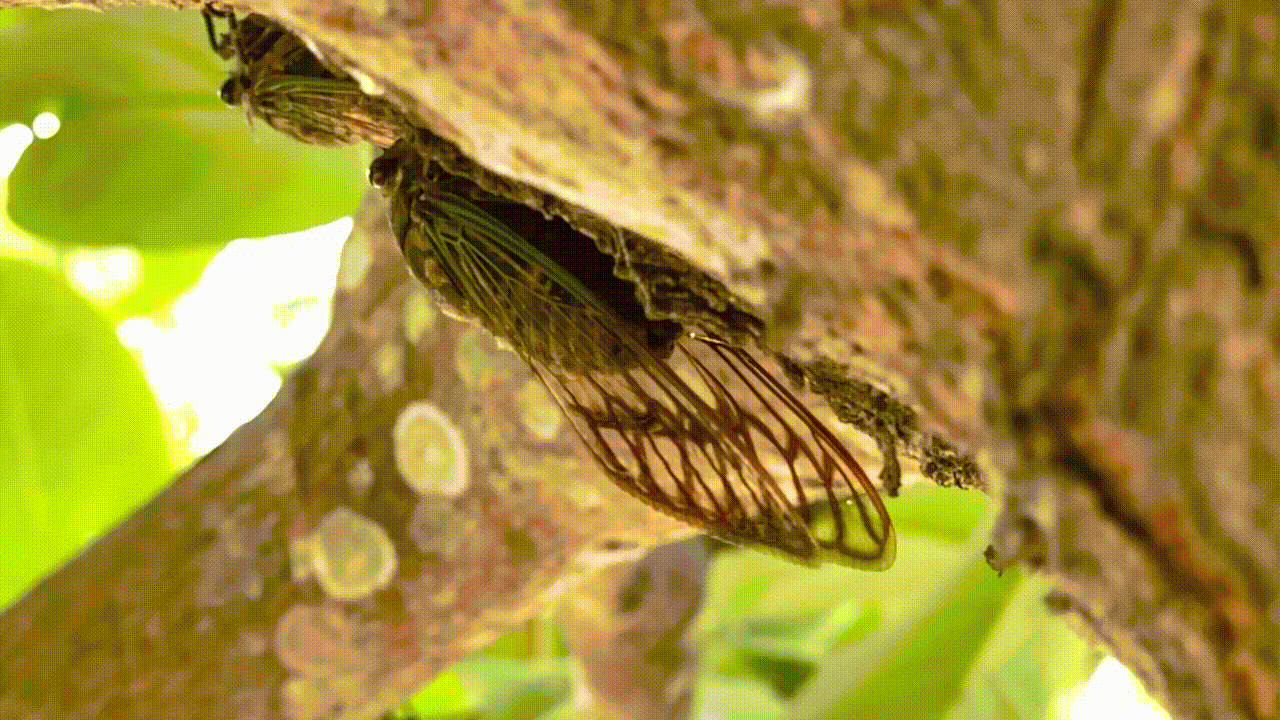Don’t Look Up: Cicadas Produce High-Speed Jets of Urine
The noisy, winged insects produce pee the same way that much larger animals do, according to a new study

The general rule of thumb for animal urination goes something like this: Big creatures, like elephants and horses, relieve themselves by producing jets of pee, while tiny creatures, like insects, can only make droplets.
But cicadas seem to be an exception to this rule: Despite their relatively small size, they pee in high-speed jets like larger animals do, according to observations of the bugs in Peru and Singapore, published Monday in the journal Proceedings of the National Academy of Sciences. The cicada’s waste excretion method is so powerful that these noisy insects take the crown for producing the strongest stream of pee relative to their size of any animal that scientists studied.
Why investigate how bugs pee? It’s mostly uncharted territory that’s ripe for scientific discoveries, for starters. Researchers know a lot about what and how animals eat and drink, but they don’t know that much about how they excrete waste.
But, on top of that, unraveling the mysteries of urination may also provide inspiration for human physics and design challenges. For example: Small bugs called glassy-winged sharpshooters produce droplets of urine, which they then catapult away from their bodies at a high speed. The sharpshooters’ powerful urination method is akin to a human trying to dislodge a dense, sticky, beach ball-sized object from one of their hands. Engineers might be able to riff on this natural process to come up with a novel way of defogging eyeglasses, for instance. And the cicada’s tiny-but-powerful jet stream of urine might offer new ideas for designing nozzles or soft robots.
Saad Bhamla, a biophysicist at the Georgia Institute of Technology, and his colleagues discovered the tiny sharpshooter’s pee-flinging prowess last year. From sharpshooters, the researchers next turned their attention to cicadas, the winged insects that can make mating sounds as loud as a motorcycle or a chain saw.
Cicadas are four to eight times bigger than sharpshooters, but both insects face the same diet-related dilemma: Their main source of food is xylem sap, a watery substance that distributes nutrients and minerals within the tissues of plants. Xylem sap isn’t very nutritious for the bugs, however, so they have to drink a lot of it to survive—and as a result, the bugs frequently have to excrete excess liquid.
During a research trip in Peru, the scientists observed cicadas in trees squirting out urine in a high-speed stream. This defied the widely accepted urination-size rule, so they decided to investigate further. They considered the effects of gravity, inertia, surface tension, viscous forces and other fluid dynamics principles on cicada urination—as well as the urination processes of more than a dozen other animals, from butterflies and mosquitoes to dogs and cows.
We propose a framework based on the Bond number (Bo) and Weber number (We), relating orifice size with fluid shape (dripping vs jetting). Despite their small size, cicadas are among the smallest organisms generating powerful jets at small scales. pic.twitter.com/XzRB4nkNQB
— Elio Challita (@eliochallita) March 12, 2024
Among this group, cicadas stand out. Their urination “stays in quite a unique region in fluid dynamics, where both inertia and capillary forces play significant roles simultaneously over gravity,” says Sunghwan Jung, an engineer at Cornell University who was not involved in the research, to the New York Times’ Alla Katsnelson.
The findings suggest that peeing in jets is the most energy-efficient way for cicadas to excrete waste. Producing droplets, then flicking them away, would demand more energy, which would require them to eat even more xylem sap—and start the cycle all over again. Cicadas are large enough for gravity and inertia to help them propel the stream of pee, researchers suggest.
Longer term, biologists may want to compare and contrast different animals’ urination methods—and consider the possible evolutionary reasons behind these differences.
“By investigating these processes, we can uncover fascinating adaptations and gain insights into how animals interact with their environment,” says study co-author Elio Challita, a robotics researcher at Harvard University who previously worked with Bhamla at Georgia Tech, to Popular Science’s Laura Baisas. “It’s also a reminder that there’s still so much to discover about the natural world, even in the most unexpected places, like cicada pee.”
The cicada urination discovery is also timely: Later this spring, on the order of a trillion cicadas will emerge from the ground in the Midwest and the Southeast during a rare natural phenomenon called a “dual emergence.” Two broods—one that emerges every 13 years, and another that emerges every 17 years—will surface at the same time.
Where will all their pee go? And what possible effects could it have on the environment? These are the types of questions scientists hope to eventually answer.
In the meantime, if you live within the cicada emergence zone and plan to spend a lot of time outdoors this spring and summer, you may want to invest in a good hat.
“It feels like when a rain just starts, and you get a small drop or two and say, ‘Is it starting to rain?’” Paula Shrewsbury, an entomologist at the University of Maryland, told the Washington Post’s Kevin Ambrose in 2021.
/https://tf-cmsv2-smithsonianmag-media.s3.amazonaws.com/accounts/headshot/SarahKuta.png)



/https://tf-cmsv2-smithsonianmag-media.s3.amazonaws.com/accounts/headshot/SarahKuta.png)